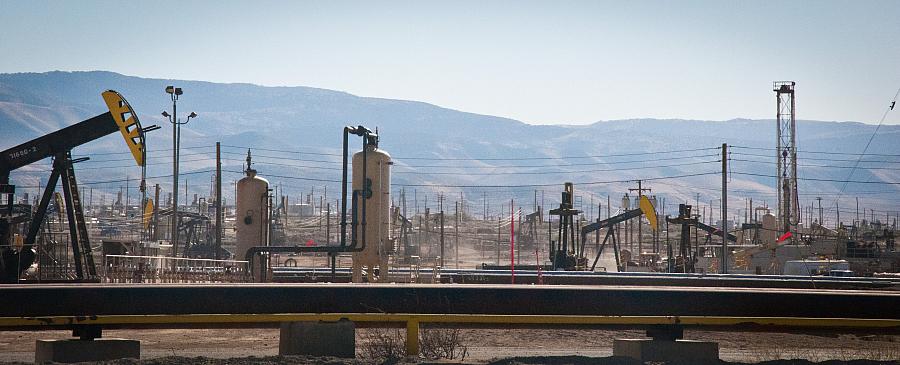Unearthing the Health Effects of Fracking

By now most people have heard about fracking, even if they’re not entirely sure what it is. I began reporting on hydraulic fracturing, or fracking, five years ago. The practice -- using water, sand and chemicals at high-pressure to crack shale formations and release oil and gas -- is practiced in more than 30 states. But we’re still learning about how communities may be impacted by the practice.
After years of writing about fracking on the east coast’s Marcellus Shale, I turned my attention to my home state of California, where there are still a lot of questions about the practice. When I began my research, California didn’t have any regulations specifically for fracking (although some have now been passed). I’ve written previously about environmental and economic impacts from fracking, but the 2013 California Endowment Health Journalism Fellowship allowed me to focus on the health impacts of fracking in California’s Monterey shale formation.
The hardest part of the reporting was finding research relevant to California, because very little has been studied in the state specifically (and geology of course varies greatly across the country). Most of the existing research focuses on health impacts from fracking gas wells, while California drillers are primarily concerned with oil. Because drillers aren’t required in most places to reveal what chemicals they’re using in fracking fluid, the understanding of its potential health effects is limited.
Still, studies conducted in states like Colorado have investigated the impacts of methane and benzene on air quality during the drilling, fracking, and producing stages of oil/gas development. However, no area that permits fracking has ever done a health impact assessment, so the full range of potential impacts are still not fully understood — which, of course, makes the need for reporting all the more important.
Here are a few things I’ve learned along the way:
1. Learn the language
Unless you work primarily as an energy reporter, you may have to learn a lot of new lingo. There are great videos that can provide information about how the process of hydraulic fracturing works, but it also comes with a new vocabulary. For starters, “fracking” often means different things to different people. Technically speaking it is one part of a process that can be used to access hard to reach oil and gas. Sometimes people (mistakenly) use fracking to describe that overall process of oil and gas drilling rather than just the step of hydraulic fracturing of the well.
One of the best ways I found to pick up on lingo was to listen to the CB radio stations that companies were using to communicate between drilling sites, security stations, and truck drivers — you can learn about trucks like “water bottles” and “rainmakers.” And if you hang out with people who live near or work in the gas and oil fields, you’ll also learn about “frackflu,” “frackrash,” “landmen,” “mancamps,” “split estate,” “water buffalo” and so much more.
2. Long-term sources
Since I just began my research on fracking in California for this project, I didn’t have any long-term sources. But I tried to cultivate that along the way so that I can see how the issue develops over time. Areas where oil and gas wells are drilled will experience impacts for many years, through drilling and then producing wells. In my reporting on fracking in other areas I’ve worked to stay in touch with good sources over years to understand more of the long-term impacts and to see how communities are affected beyond just the drilling and fracking of a well.
Some of my sources live on the opposite coast but I keep in touch regularly through Facebook to understand what’s happening even when I’m not working on a story. And I try to visit annually to get a sense of what has changed. I’ve watched entire rural communities be transformed over a period of several years.
3. Ask for tours
One of the best ways to understand what’s happening in the oil and gas fields is to ask for a tour. Some drilling companies will take journalists out on site to well pads — although I’ve yet to have a company in California do this. Community groups are often good sources as well. Although they’ll have limited access to the drill site, they’ll have knowledge of the area and can show other impacts to roads, water sources, and homes.
And if you’re feeling adventurous, groups like Southwings and Ecoflight take journalists on flyover tours so you can get an aerial view of operations. If you’re in an area that is not served by either group, pilots can often be hired from local airports for hourly rates.
4. It’s a hot potato
Fracking is a very contentious issue, which can make reporting difficult, especially when looking for studies that are independent and peer-reviewed. People have huge personal stakes — whether it’s money, livelihood, health or land. Each side tends to have its experts, but there is also more emerging research coming from universities such as Duke and Cornell.
While there are often dueling community and industry blogs (or documentaries like “Gasland” and “FrackNation”) things are often not as black and white when you get immersed in communities. Usually the easiest sources to find are the outspoken ones on either side of the issue, but many more people fall somewhere in a gray area — some work in industry and have seen health or environmental impacts; others are glad to have leased their land for drilling, but may also have concerns; some simply want to see the industry regulated better.
Are We Trading Our Health For Oil in New, Fracking-Induced California Gold Rush?

